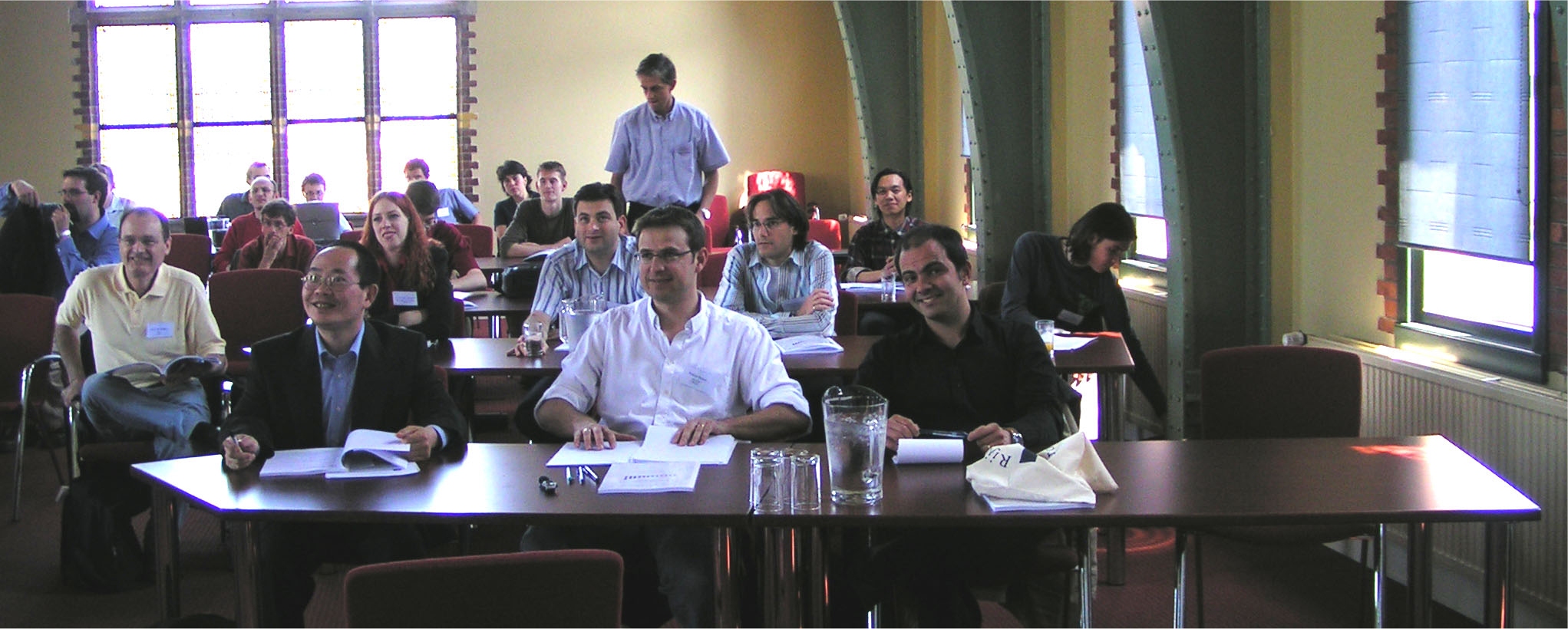463 – Size-dependent Mechanics of Materials
Date:
13 June 2005 – 16 June 2005
Location:
Groningen, The Netherlands
Contacts:
Chairpersons:
Prof. P.R. Onck
University of Groningen
Micromechanics of Materials
Nijenborgh 4, 9747 AG Groningen
The Netherlands
Phone: +31-(0)50 363 8039, Fax: +31-(0)50 363 4886
E-mail: p.r.onck@phys.rug.nl
Prof. Dr. T. Pardoen
Université Catholique de Louvain
Materials Science and Processes Department
PCIM, Bâtiment Réaumur
Place Sainte Barbe 2
1348 Louvain-la-Neuve
Belgium
EUROMECH contact person: Prof. E. van der Giessen
Website
The main driving force in modern technology, including MEMS, is to make microsystems of smaller dimensions. This poses enormous technological challenges on manufacturing procedures, both on the structural as well as microstructural level. In design, on the other hand, the engineer is faced with mechanical behavior that is inherently size dependent. Many examples have appeared in the literature showing pronounced size effects in shear, torsion, tension, indentation and fracture/cracking tests. Concepts from mechanics of materials that are based on a classical, size-independent, continuum description are not able to account for this. Thus, there is a need for new mechanics, able to address size-dependent deformation and fracture.
The goal of this colloquium is to provide a platform on which the above issues can be addressed. Contributions are solicited that address size-dependent behavior in all material classes, at all length scales above the atomic scale, both experimental as well as theoretical. Special emphasis will be placed during this colloquium on
(i) understanding the microstructural mechanisms that lead to size effects
(ii) capturing the size-scale dependent behavior in theoretical models,
by using
- experimental procedures, including advanced in-situ observation techniques
- discrete microstructural modeling
- enhanced (enriched, generalized) continuum modeling.

The goal of this colloquium is to provide a platform on which the above issues can be addressed. Contributions are solicited that address size-dependent behavior in all material classes, at all length scales above the atomic scale, both experimental as well as theoretical. Special emphasis will be placed during this colloquium on
(i) understanding the microstructural mechanisms that lead to size effects
(ii) capturing the size-scale dependent behavior in theoretical models,
by using
- experimental procedures, including advanced in-situ observation techniques
- discrete microstructural modeling
- enhanced (enriched, generalized) continuum modeling.

